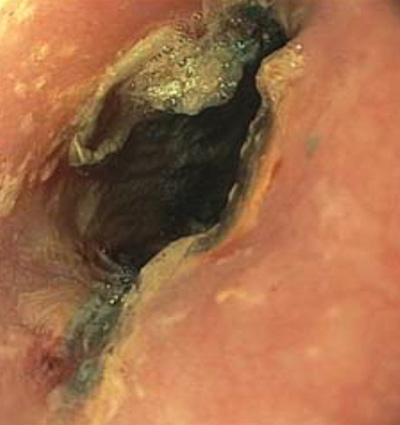By HANNA MORDOH
WISH-TV | wishtv.com
Doctors are warning parents about the growing danger of young children swallowing button batteries. Health officials say it’s been an issue for years, but now they’re seeing even more cases.
“Kids have the inquisitiveness of playing with them and they think they look shiny, nice, and put them in their mouth. That can be dangerous because they can cause harm in a very short time. Especially in the gut – especially the esophagus,” Dr. Sheela Deivanayagam, a pediatric gastroenterologist at Ascension St. Vincent, said. “They can actually cause burns inside, electrical burns.”
Dr. Deivanayagam treated five-year-old Maci Bullock after she swallowed a small button battery. Luckily Maci is okay, but now she’s sharing her story and was even featured at a recent Indiana Fever game to help raise awareness.
“When she told me she swallowed the battery, I knew to go right away and get help,” Maci’s mom, Jesse, said.
“Jesse came and told me and that’s when I said, ‘We need to get her to a hospital,’” Maci’s dad, Mike, added.
Mike Bullock is a nurse at Ascension St. Vincent, so he and his wife knew this was serious.
After an X-ray, the battery needed to be removed, fast.
“They quickly went over what they were going to do. They were going to put her under a bit of anesthesia and remove the battery,” Jesse said.
Luckily, the battery was removed before any damage was done. But doctors say button batteries can quickly cause internal burns – even if they no longer work.
“They can cause necrosis; there are chemicals inside the button which can come out and erode. So they can actually cause burns inside,” Dr. Deivanayagam explained. “They can cause holes in the gut as well and then sometimes it can cause tracks or fuse, called fistulas, that go into the breathing area of the lungs the trachea.”

Internal injuries along the wall of the esophagus caused by a button cell battery. (Photo provided by Ascension St. Vincent)
According to the National Capital Poison Center around 3,500 people swallow button batteries in the U.S. every year. The incidents are common, and so is the presence of button batteries in many household items and children’s toys.
“Toys, a lot of them have button batteries, so there is a lot more exposure to it. Definitely it is on the rise and we have quite a few number of cases,” Deivanayagam said.
If a child over one year old swallows a button battery, doctors say honey can actually help. While on the way to the hospital, a child can be given one to two teaspoons of honey every 10 minutes. This will coat the battery and delay the damage.
“It improves the mucus not coming in contact with the battery too much and can actually prevent the burn. Do that, but of course, take them to the ER as soon as you can,” Deivanayagam said.
So, how can parents prevent this before it happens?
Doctors suggest removing batteries from toys or putting tape over the toy’s battery access. Check the screws on devices and keep batteries locked away. Also, have a conversation with your kids, and don’t feel guilty if this happens.
“We do have a bunch of conversations with them, too, about safety and not putting things in their mouths. So she did know better, which is why she said something. But they still really like to flirt with danger,” Maci’s mom, Jesse, said.
Now, Maci and her family are sharing her story to help other families. She was recently featured during an Indiana Fever game to highlight the issue and raise awareness – a moment her parents hope sparks a conversation.
“Talking to them. If they know it is wrong, at least they will come to you right away – even if they do something they are not supposed to,” Jesse said.
Doctors say that just like button batteries, swallowing magnets can be very dangerous. A magnet can tear through the esophagus. In both cases, doctors urge medical treatment right away.
Some battery makers are addressing the issue. Duracell launched a bitter-tasting battery to help deter kids from swallowing them. Look for ‘child secure’ labeled packaging for the most child-safe option.

